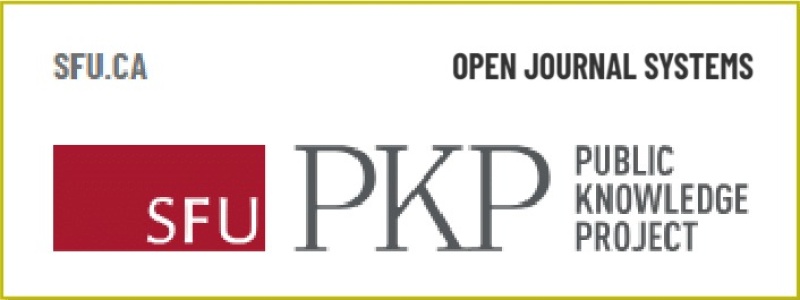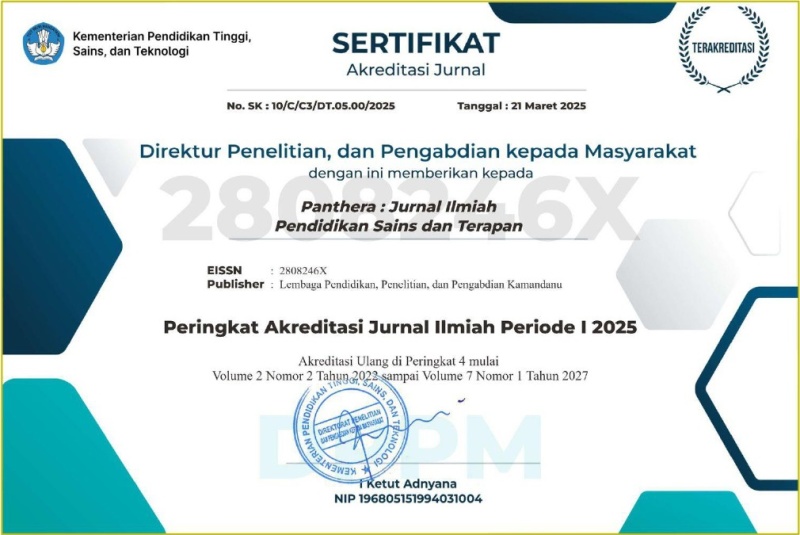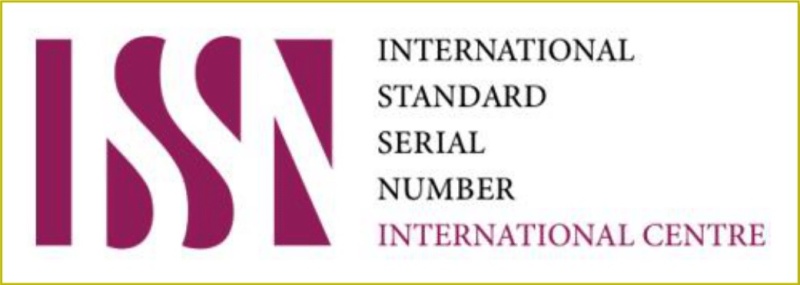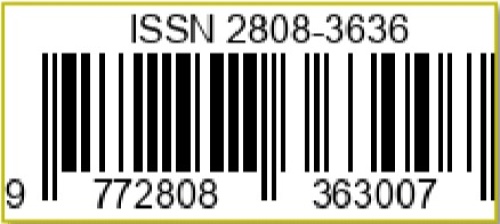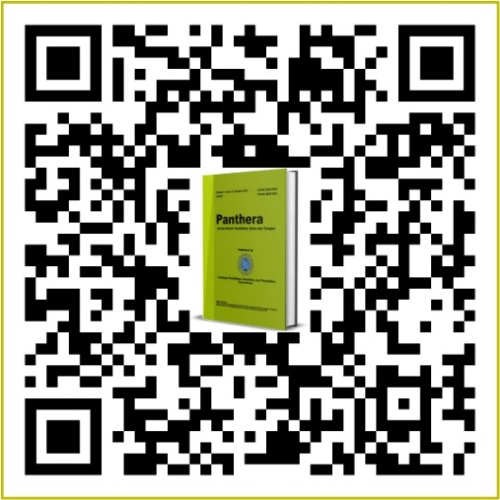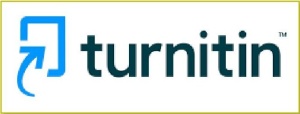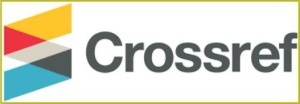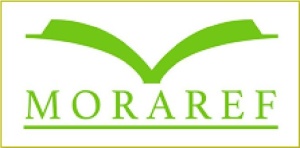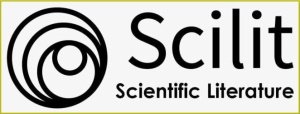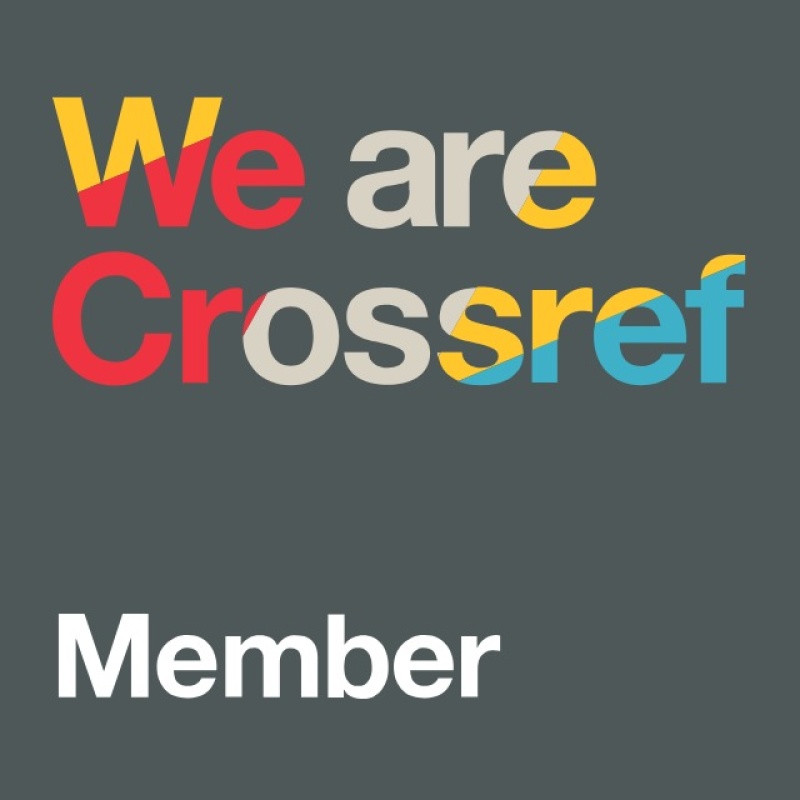Pengaruh Model Pembelajaran Somatic Auditory Visualization Intelectually (SAVI) terhadap Keterampilan Sosial dan Hasil Belajar Kognitif Siswa Kelas X
DOI:
https://doi.org/10.36312/pjipst.v2i3.103Keywords:
Somatic Auditory Visualization Intellectually Model, Social Skills, Cognitive Learning Outcomes.Abstract
This study aims to determine the effect of the Somatic Auditory Visualization Intellectually (SAVI) learning model on social skills and cognitive learning outcomes of students of class X MA NW Sanggeng in the 2016/2017 academic year. The type of research used is quasi-experimental (quasi-experimental). The research design used was pretest-posttest non-equivalent control group design. The population in this study were all students of class X MA NW Sanggeng in the 2016/2017 academic year as many as 33 people consisting of 2 classes, namely class X-A consisting of 16 students and class X-B consisting of 17 students. The sample of this study was taken with a saturated sample technique. Class X-A as the experimental class and class X-B as the control class. The instruments used in this study were lesson plans implementation sheets, student social skills observation sheets and student learning outcomes tests (objective or multiple choice tests). The data analysis technique used to analyze the data from this study was polled variance tests. The results of data analysis showed that there were differences in the improvement of cognitive learning outcomes between students who used the somatic auditory visualization intellectually (SAVI) learning model and students who did not use the somatic auditory visualization intellectual (SAVI) learning model. Social skills in the experimental class with an average value of 75% (active) and in the control class with an average value of 66.22% (active). The results of the t-test are known that the value of ????count is 5.237 which is consulted with at the 5% significance level of 1.696 so that ????count > ttable H0 is rejected (Ha is accepted). This means that there is an effect of using the somatic auditory visualization intellectually (SAVI) learning model on social skills and cognitive learning outcomes of class X MA NW Sanggeng students.
Downloads
References
Arikunto, S. (2013). Prosedur Penelitian Suatu Pendekatan Praktik. Jakarta: PT. Rineka Cipta.
Budiastuti, D., & Bandur, A. (2018). Validitas dan Reliabilitas Penelitian. Bogor: Mitra Wacana Media.
Hanifah, N. (2014). Perbandingan Tingkat Kesukaran, Daya Pembeda Butir Soal, dan Reliabilitas Tes Bentuk Pilihan Ganda Biasa dan Pilihan Ganda Asosiasi Mata Pelajaran Ekonomi. sosio e-kons, 6(1), 41-55. http://dx.doi.org/10.30998/sosioekons.v6i1.1715
Kurniasih, I., & Sani, B. (2016). Ragam Pengembangan Model Pembelajaran untuk Peningkatan Profesionalitas Guru. Jakarta: Kata Pena.
Lutfianasari, D. (2017). Penerapan Pembelajaran Kooperatif Tipe Quick on the Draw dalam Proses Pembelajaran Sejarah Kebudayaan Islam di MAN 1 Kudus Tahun Ajaran 2017/2018. Skripsi. STAIN Kudus.
Mulyati, F. (2013). Pengaruh Metode Pembelajaran Somatic Auditory Visualization Intelectually (SAVI) terhadap Peningkatan Hasil Belajar IPA Biologi Siswa Kelas VII SMPN 12 Mataram. Skripsi. IKIP Mataram.
Setiani, T. (2014). Peningkatan Keterampilan Sosial Siswa Melalui Penerapan Metode Simulasi pada Pembelajaran IPS Kelas V SD Negeri Pakem 2 Sleman. Skripsi. Universitas Negeri Yogyakarta.
Shoimin, A. (2014). 68 Model Pembelajaran Inovatif dalam Kurikulum 2013. Yogyakarta: Ar-Ruzz Media.
Sugiyono. (2014). Metode Penelitian Kuantitatif, Kualitatif dan R&D. Bandung: CV. Alfabeta.
Syamilah, M. N. (2017). Model Pembelajaran Kooperatif Tipe Think Pair Share (TPS) dalam Upaya Meningkatkan Aktivitas Belajar Siswa pada Mata Pelajaran Ekonomi di SMA Pasundan 4 Bandung. Skripsi. Universitas Pasundan.

Downloads
Published
How to Cite
Issue
Section
License
Copyright (c) 2022 Nini Erniati, Ida Royani, & Ali Imran

This work is licensed under a Creative Commons Attribution-ShareAlike 4.0 International License.
-
Attribution — You must give appropriate credit, provide a link to the license, and indicate if changes were made. You may do so in any reasonable manner, but not in any way that suggests the licensor endorses you or your use.
-
ShareAlike — If you remix, transform, or build upon the material, you must distribute your contributions under the same license as the original.

